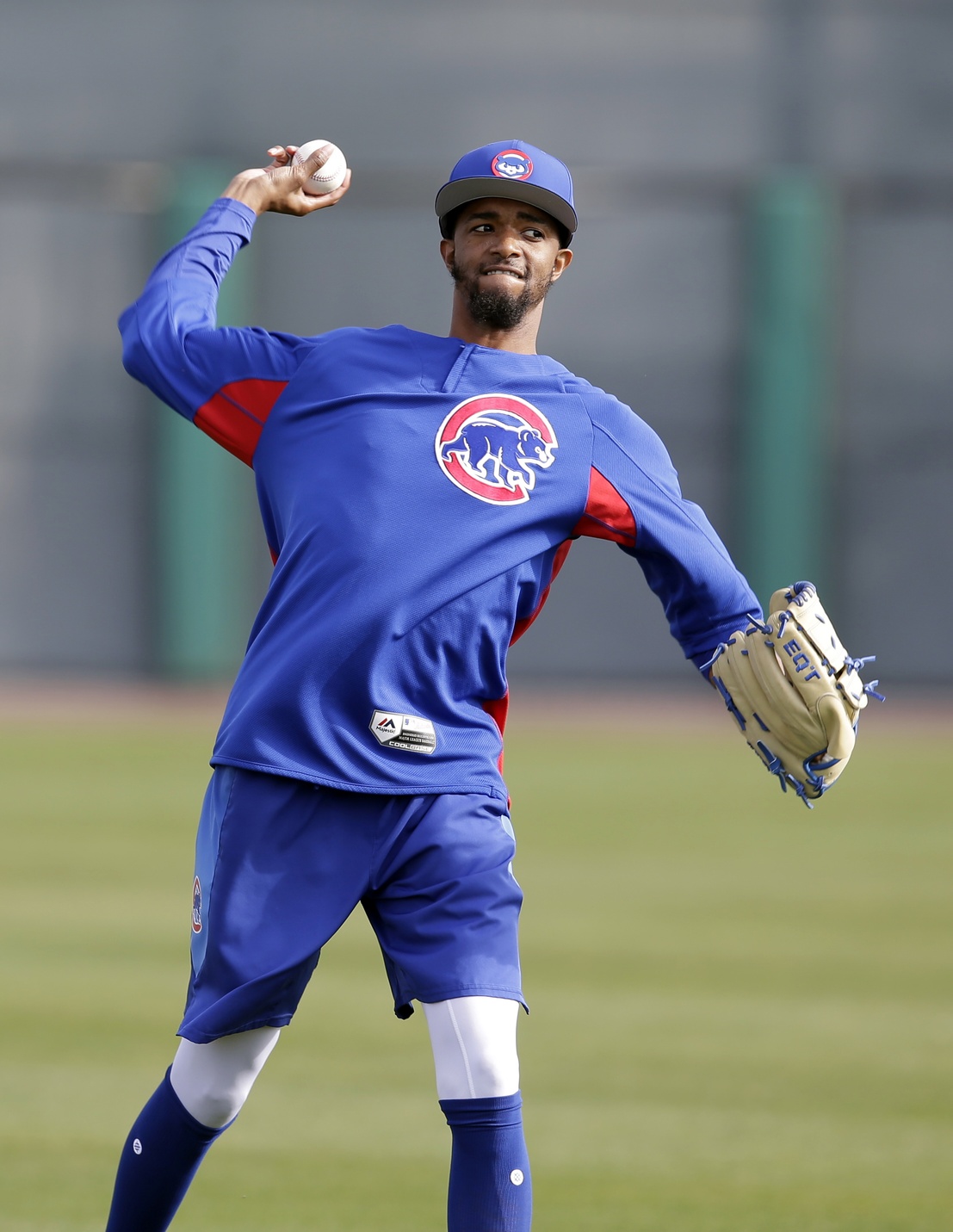While Joe Maddon may never have to pay for a meal in this city again after 2016 (does Maddon even eat meals? Or does he have some new-age health bars he uses? These are the questions, people!), there has been something of a let-down in that the creativity in deploying his lineups hasn’t quite been what we envisioned when he was hired. Not that it hasn’t worked out, of course—to complain would seem to be the very definition of shouting at the rain.
And yet we’ve seen some inklings of what Maddon and what the front office are willing to do. They’ve been fine with having what looks like too many players for too few positions. They’ve been fine with moving Bryant, Baez, Zobrist, and now Happ around a bit. They’ve accentuated rest when they can. They’ve gone to six-man rotations when they felt it necessary. So they’re clearly not rigid.
Still, the bullpen remains push-button. Maddon has always had a closer, a setup guy, and something of a fireman. 2015 saw Rondon take over for Motte when Motte predictably immolated with his fastball-only approach that he couldn’t locate. Strop and Grimm were the set-up guys (and Grimm was really good that year). Travis Wood did just about everything.
The following season saw Rondon for half and then Chapman for the second half, with Rondon and Strop setting up (kinda) and then Mike Montgomery doing just about everything else.
And Wade Davis closed last year, with Strop and Edwards setting up, and Montgomery once again doing everything. You can see the setup.
This Cubs bullpen has the potential to run like stat-heads and nerds have always wanted to run a pen, because it doesn’t really have a closer. We know the front office thinks like this too, because they tried it in their first year in Boston in 2003. It blew up, and they’ve been a touch gun-shy about it ever since.
The excuse for not running a pen where your best reliever is simply used when the danger seems highest is that relievers like their routines. The thought is that you can’t ask them to pitch the ninth one day and the seventh the next. We also know contracts play a part in this, because even though we know better, you best believe players still believe “MOAR SAVES=MO’ MONEY”. And a lot of front offices do, too, because the ninth inning and the last three outs still have special mystique.
Of course, I’m not sure I’ve ever heard pitchers complain when a closer gets hurt or throws up all over himself for a couple weeks and gets demoted. The guy who goes from warming up for the eighth to warming up for the ninth has never come to the press and said, “Yeah this totally weirds me out. I can’t get used to it and can’t wait to return to the eighth!” No one seems to worry about their routines then.
The Cubs come into this season with a pen where no one has specialized in the ninth inning. Brandon Morrow pitched in the seventh inning last year 15 times, the eighth inning 18 times, and the ninth inning just eight times. Steve Cishek was actually way more regulated, appearing in the seventh inning 27 times. But the year before he appeared in the eighth inning 17 times, and closed 42 times. Am I supposed to believe that one season made his routine that stiff?
Justin Wilson was evenly split between the eighth and ninth last year, and floated a little more around when he needed a compass just to find the mound after his trade. We know Pedro Strop has basically only been in the seventh or eighth for most of the last three seasons, but he’s never been restricted to just one of those. Carl Edwards was evenly split between the seventh and eighth innings last year, with another 12 appearances in the sixth, so you can’t tell me he only knows one way. Montgomery and Duensing are used to doing everything.
There is always the consideration of who can be brought in in the middle of an inning and who can’t, who needs more time to warm than others, and so on. But generally, managers don’t want to bring in anyone in the middle of an inning unless they have to, or it’s been clearly laid out they want platoon advantages and everyone knows.
The Cubs will win a lot no matter what they do with the ‘pen. However, this ‘pen has a chance to be a real weapon. It’s still a bullpen, so it has a real chance to be a clown car too, but that’s just how bullpens are. Still, the Cubs aren’t dealing with anyone out there who has had it a certain way for years like they did with Chapman or Davis. There is a chance for real innovation or flexibility here, and it’ll be just a tad upsetting if they don’t take advantage of it.
Lead photo courtesy Rick Scuteri—USA Today Sports

I still vote to grab Holland on the cheap, while most other teams have no interest in competing, and so long as Cubs can remain under the cap. Coming into camp, Cubs were hopeful on Maples or Grimm making the final cut. Neither did. Butler appears to have it. But Holland is far more dynamic and trustworthy —not just than Butler—but almost anyone else in the pen.
That said, agree with Sam’s idea on pen flexibility, and would not be married to Holland as automatic closer.